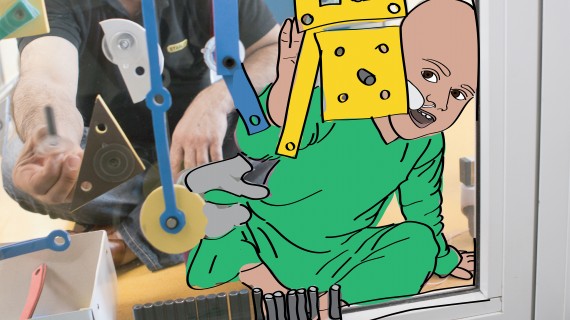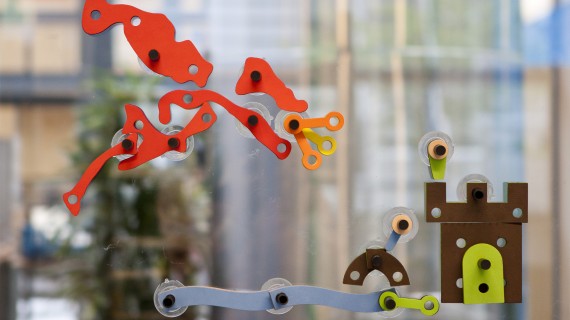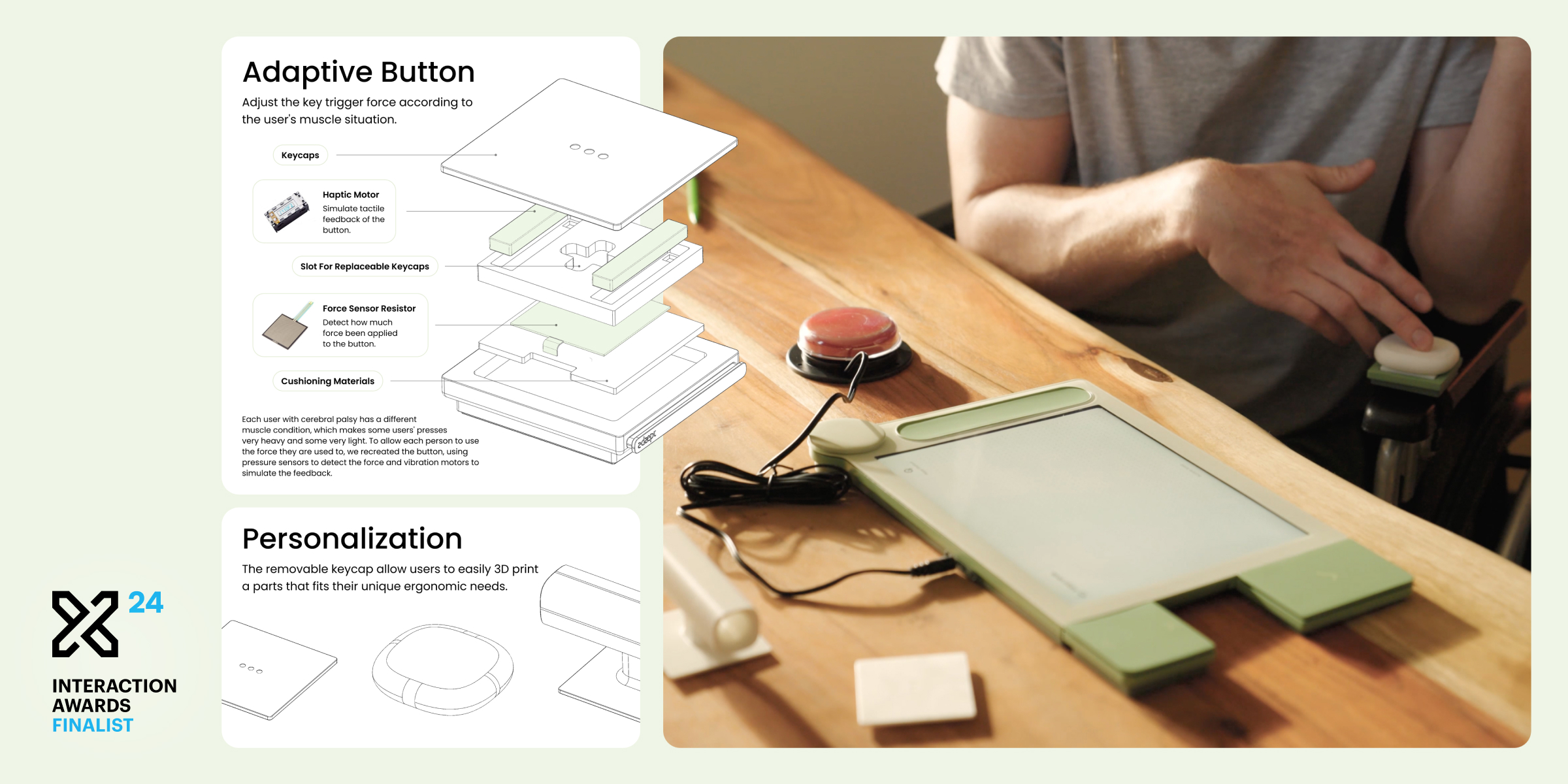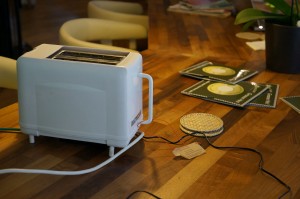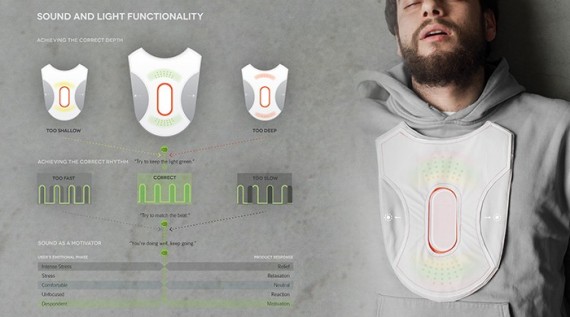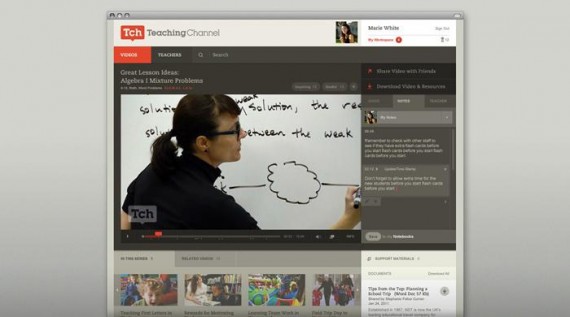KonneKt: a social game for isolated children in the hospital
Team
Company | Institution
Category
Type
Project description
During their treatment, many child cancer patients are isolated for medical reasons. During this period, they often feel quite well, and are very willing to play and to make contact with peers, but because they are not allowed to leave their rooms, they have no way to do so. Direct contact and play with peers is crucial for normal social development, but in some cases, isolation can take up to 4 months, which roughly disrupts this normal social development.
Overview
During their treatment, many child cancer patients are isolated for medical reasons. During this period, they often feel quite well, and are very willing to play and to make contact with peers, but because they are not allowed to leave their rooms, they have no way to do so. Direct contact and play with peers is crucial for normal social development, but in some cases, isolation can take up to 4 months, which roughly disrupts this normal social development.
The goal of this project was to support normal social development of isolated children by empowering them to connect with their peers in the hospital in a very direct (face to face) way.
Context
Please take a moment to think of the first word that pops to mind when you read the term ‘childhood cancer’…
The first words I thought of were words such as ‘chemo’, ‘pain’, ‘nausea’, ‘death’, ‘traumatic’. During playful interviews with child cancer patients, I realized, however, that I was prejudiced about child cancer patients. Although all of the above mentioned terms are true, and apply to childhood cancer, they offer an incomplete and one sided image. None of the terms relate to childhood! The interviews showed that childhood cancer patients have desires that are no different from those of any other child. They want to play, explore and pull pranks. Children with cancer are mainly ‘just’ children!
Furthermore, the research showed three types of preferred play: gamers (who like games with pre-set rules and boundaries such as board games), adventurers (who like to explore and make up their own games), and tinkerers (who like to create things). The proposed solution had to be suitable for each of these groups.
Impact
Multiple iterations of KonneKt were tested at child hospitals to analyze the impact and effect of KonneKt. I could tell you that KonneKt works very well, but everybody says that about his/her project, so I prefer to show you. For that, I would like to refer to the added movie (at 1m14s). In the movie you see two girls engaging in social play in a situation where that would not be possible (or probable) without KonneKt. KonneKt transforms the glass from a barrier into a medium for interaction. During the tests, children between 2 years old and 15 years old played with KonneKt.
In the observations, I learned that individual play with KonneKt attracts other children to play, so when isolated children are building something on their window on their own, their play can easily transform into social play when children join on the other side of the glass. The ambiguous, modular and open character of KonneKt makes it interesting for different kinds of children. The two girls in the movie are using KonneKt for ‘adventurous’ play, and the boy on the background is tinkering!
Because the production costs of KonneKt are low, realization of KonneKt is very feasible.
Craft
A generative game was developed to help children express their thoughts and feelings about the hospital, (changing) social relations -at home and in the hospital-, and activities in the hospital.
The interviews resulted in personas of children in the hospital. The personas described type of stay in the hospital (day treatment or hospitalization, isolation or non-isolated), age, and preferred play type. The personas were then used to set a scope for the project: a focus on isolated children and a focus on children between 6 and 10 years old, because these sub-groups needed help with social contact most. The solution had to be suitable for each of the preferred play types.
Multiple iterations of KonneKt were prototyped and tested at hospitals. The last iteration of KonneKt consists of friendly, soft, colourful EVA-foam elements of various sizes and shapes to trigger the imagination of children and to invite for diverse play. Magnet connectors and suction cup connectors were added to attach the shapes to the window. The suction cup connectors allow children to play individually and to attach shapes to a fixed position on the window and the magnet connectors elicit dynamic play and require a second player.
Overview
During their treatment, many child cancer patients are isolated for medical reasons. During this period, they often feel quite well, and are very willing to play and to make contact with peers, but because they are not allowed to leave their rooms, they have no way to do so. Direct contact and play with peers is crucial for normal social development, but in some cases, isolation can take up to 4 months, which roughly disrupts this normal social development.
The goal of this project was to support normal social development of isolated children by empowering them to connect with their peers in the hospital in a very direct (face to face) way.
Context
Please take a moment to think of the first word that pops to mind when you read the term ‘childhood cancer’…
The first words I thought of were words such as ‘chemo’, ‘pain’, ‘nausea’, ‘death’, ‘traumatic’. During playful interviews with child cancer patients, I realized, however, that I was prejudiced about child cancer patients. Although all of the above mentioned terms are true, and apply to childhood cancer, they offer an incomplete and one sided image. None of the terms relate to childhood! The interviews showed that childhood cancer patients have desires that are no different from those of any other child. They want to play, explore and pull pranks. Children with cancer are mainly ‘just’ children!
Furthermore, the research showed three types of preferred play: gamers (who like games with pre-set rules and boundaries such as board games), adventurers (who like to explore and make up their own games), and tinkerers (who like to create things). The proposed solution had to be suitable for each of these groups.
Impact
Multiple iterations of KonneKt were tested at child hospitals to analyze the impact and effect of KonneKt. I could tell you that KonneKt works very well, but everybody says that about his/her project, so I prefer to show you. For that, I would like to refer to the added movie (at 1m14s). In the movie you see two girls engaging in social play in a situation where that would not be possible (or probable) without KonneKt. KonneKt transforms the glass from a barrier into a medium for interaction. During the tests, children between 2 years old and 15 years old played with KonneKt.
In the observations, I learned that individual play with KonneKt attracts other children to play, so when isolated children are building something on their window on their own, their play can easily transform into social play when children join on the other side of the glass. The ambiguous, modular and open character of KonneKt makes it interesting for different kinds of children. The two girls in the movie are using KonneKt for ‘adventurous’ play, and the boy on the background is tinkering!
Because the production costs of KonneKt are low, realization of KonneKt is very feasible.
Craft
A generative game was developed to help children express their thoughts and feelings about the hospital, (changing) social relations -at home and in the hospital-, and activities in the hospital.
The interviews resulted in personas of children in the hospital. The personas described type of stay in the hospital (day treatment or hospitalization, isolation or non-isolated), age, and preferred play type. The personas were then used to set a scope for the project: a focus on isolated children and a focus on children between 6 and 10 years old, because these sub-groups needed help with social contact most. The solution had to be suitable for each of the preferred play types.
Multiple iterations of KonneKt were prototyped and tested at hospitals. The last iteration of KonneKt consists of friendly, soft, colourful EVA-foam elements of various sizes and shapes to trigger the imagination of children and to invite for diverse play. Magnet connectors and suction cup connectors were added to attach the shapes to the window. The suction cup connectors allow children to play individually and to attach shapes to a fixed position on the window and the magnet connectors elicit dynamic play and require a second player.

